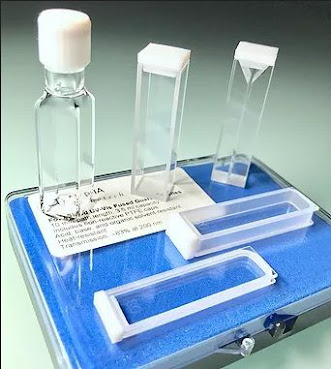Introduction:
In the dynamic realm of laboratory
research and experimentation, the choice of consumables plays a crucial role in
ensuring accurate and reliable results. Alpha Nanotechne, a leading provider of
laboratory consumables, offers a diverse range of high-quality products
designed to meet the demanding needs of modern scientific exploration. In this
blog post, we delve into the significance of temperature-resistant quartz
crucibles, boats, plates, and laboratory borosilicate glass beads with a focus
on their unique features and applications.
Temperature-Resistant Quartz Crucibles,
Boats, and Plates:
Alpha Nanotechne's Temperature-Resistant
quartz crucibles, boats and plates
stand out as essential tools for high-temperature applications in laboratories.
Crafted from premium-quality quartz, these consumables exhibit excellent
thermal stability, making them ideal for processes that involve extreme heat.
Researchers can rely on these durable products to withstand demanding
conditions, ensuring the integrity of their experiments.
 |
| Temperature-Resistant Quartz Crucibles, Boats and Plates |
The Temperature-Resistant quartz crucibles are particularly noteworthy for their resistance to chemical corrosion, making them suitable for a wide range of applications, including the handling of reactive substances and the melting of various materials. Whether used in metallurgy, materials science, or chemistry, Alpha Nanotechne's quartz crucibles, boats, and plates provide researchers with the reliability and durability they need for precise and repeatable experiments.
Laboratory Borosilicate Glass Beads
(3mm):
Laboratory borosilicate glass beads, with
a diameter of 3mm, offer versatility in various experimental setups.
Borosilicate boats and plates is
renowned for its resistance to thermal shock, chemical durability, and optical
clarity. These beads find applications in sample preparation, mixing, and
homogenization processes.
The 3mm size makes these beads suitable
for a range of laboratory procedures, including cell culture, DNA extraction,
and grinding applications. Researchers can leverage the uniformity and purity
of Alpha Nanotechne's borosilicate glass beads to enhance the reproducibility
of their experiments and achieve consistent results.
Conclusion:
Alpha Nanotechne's laboratory
consumables, including Laboratory borosilicate glass beads 3mm, boats,
plates, and laboratory borosilicate glass beads, demonstrate a commitment to
excellence in providing researchers with tools that meet the highest standards
of quality and performance. As laboratories continue to push the boundaries of
scientific exploration, investing in reliable consumables becomes paramount for
achieving accurate and meaningful results. With Alpha Nanotechne, researchers
can trust in the durability, stability, and precision of their laboratory
consumables, paving the way for advancements in scientific discovery.



%20Microspheres.jpg)


.jpg)
